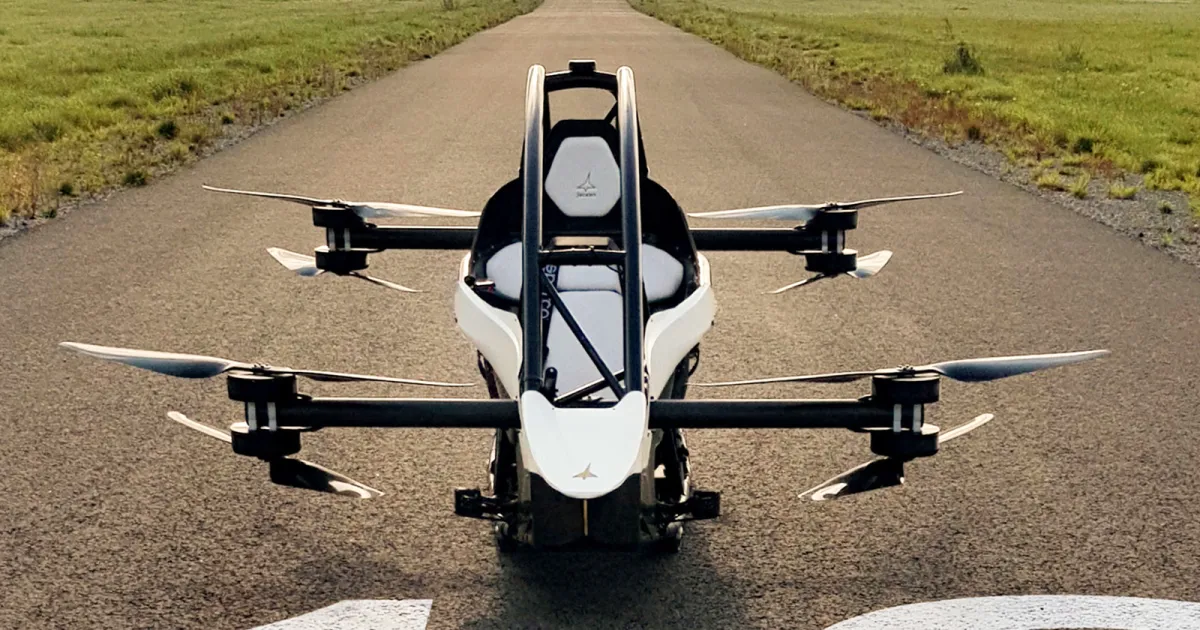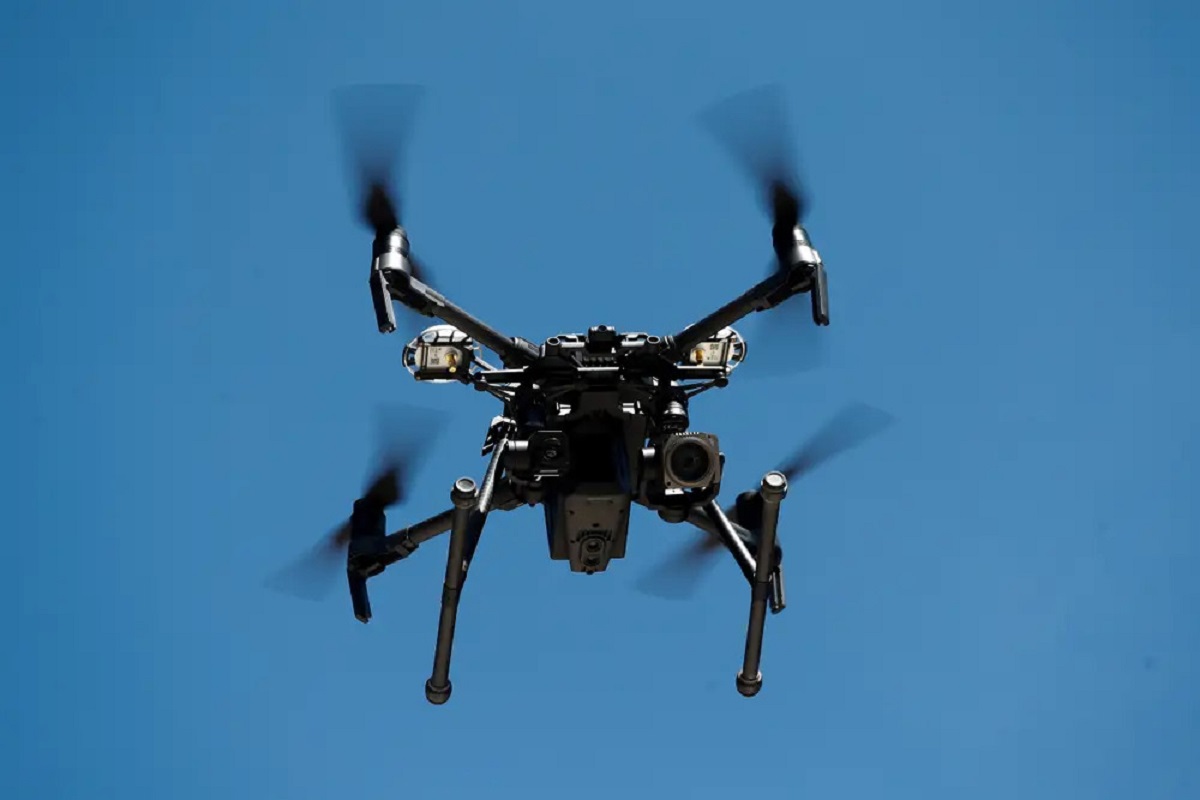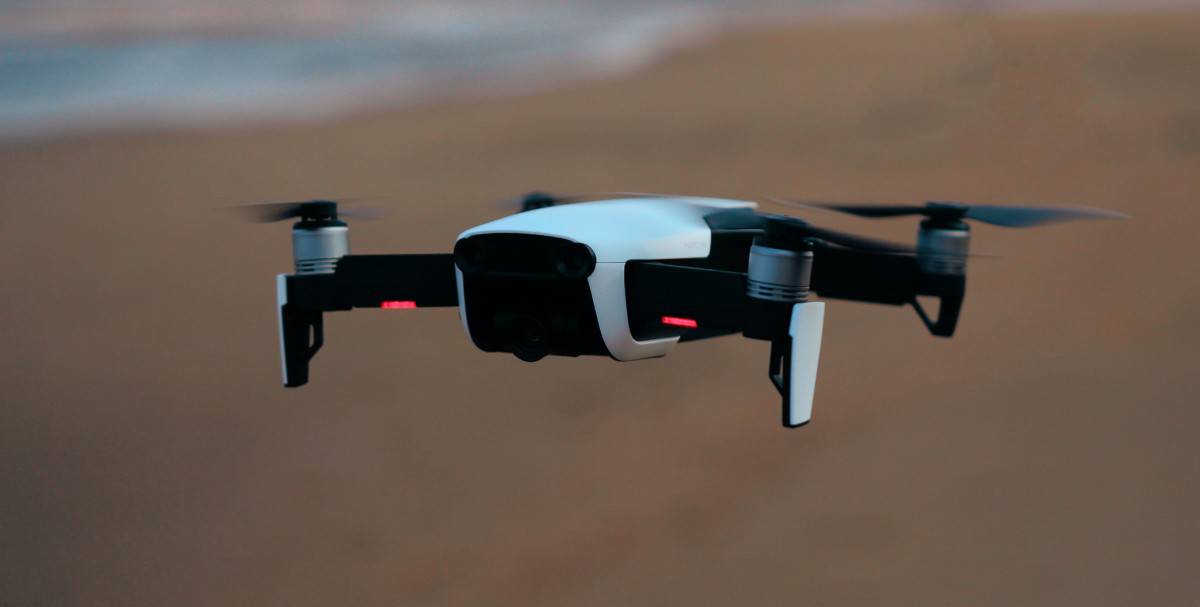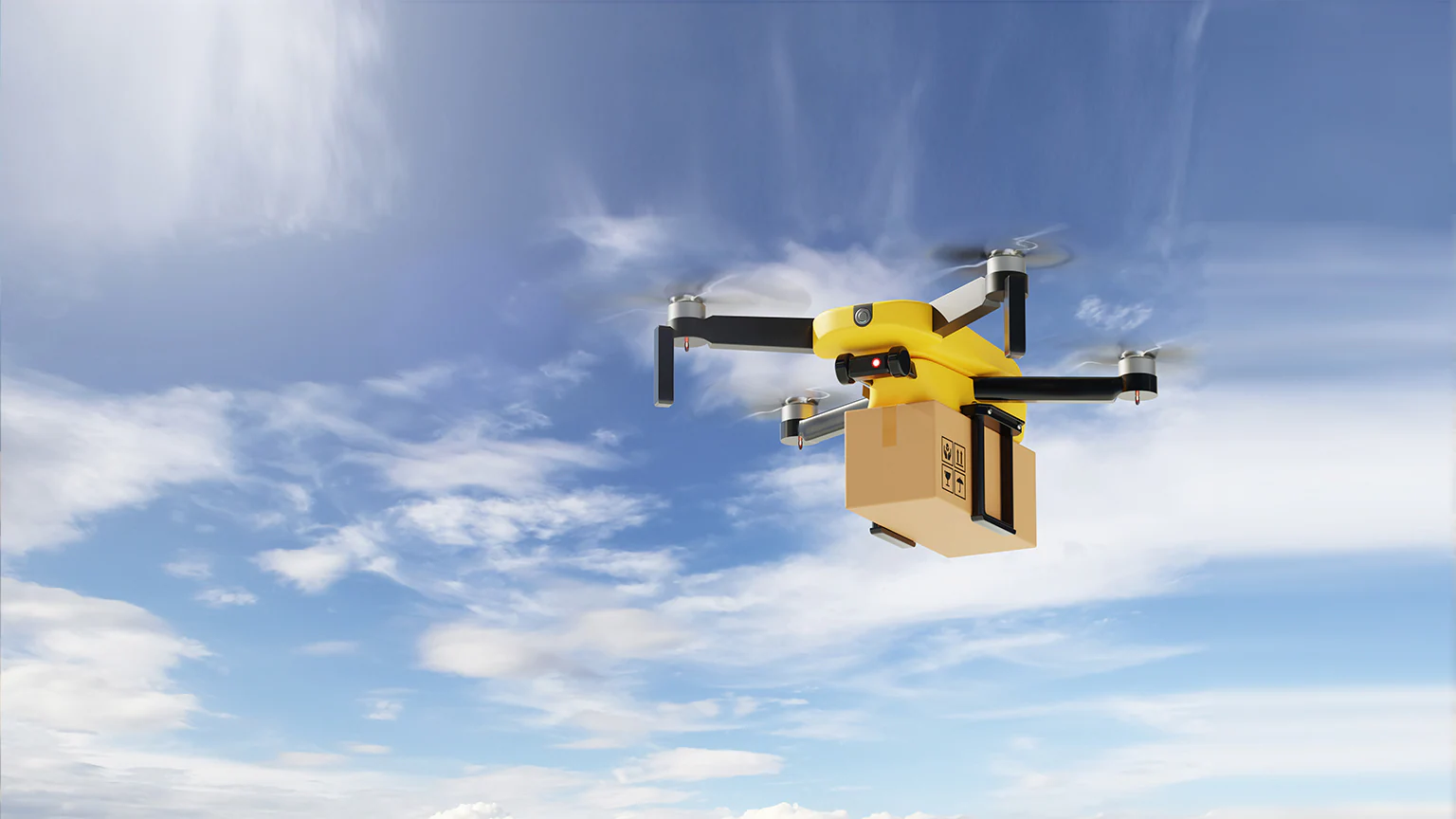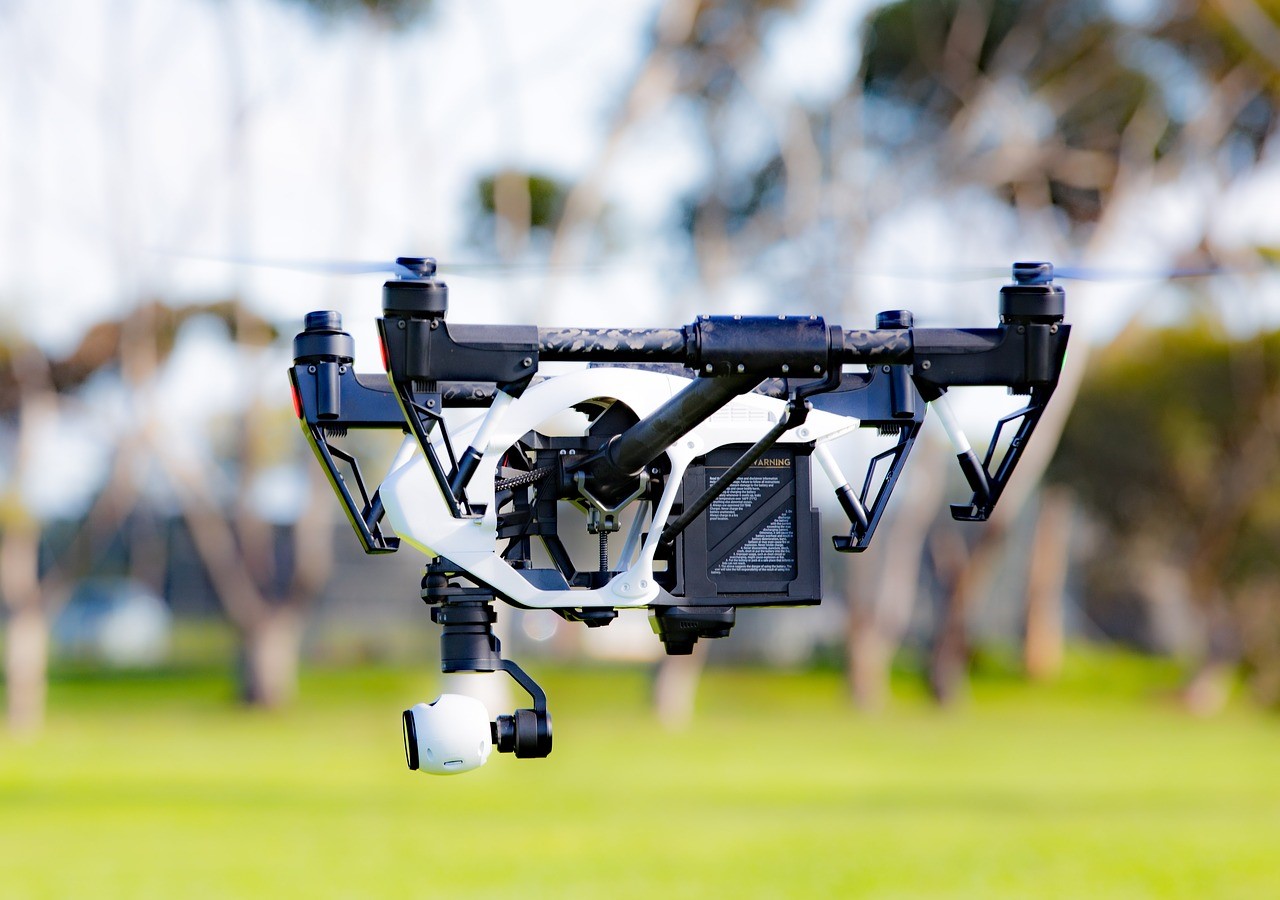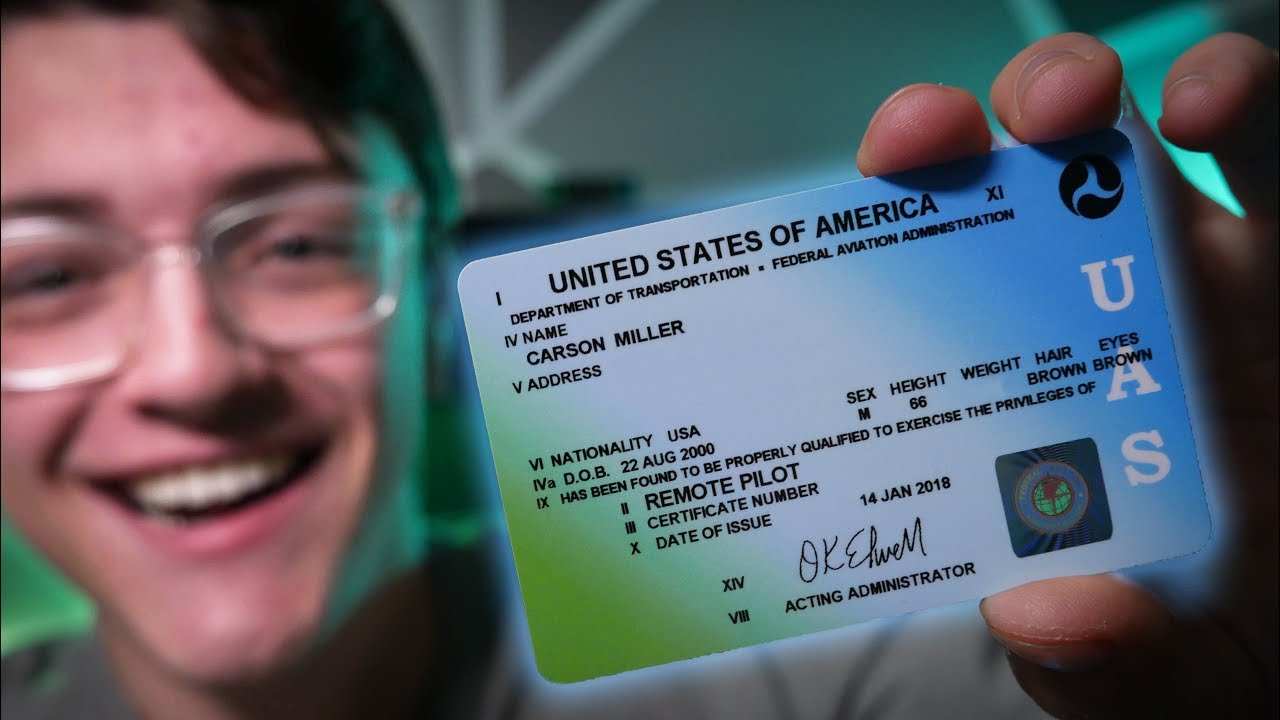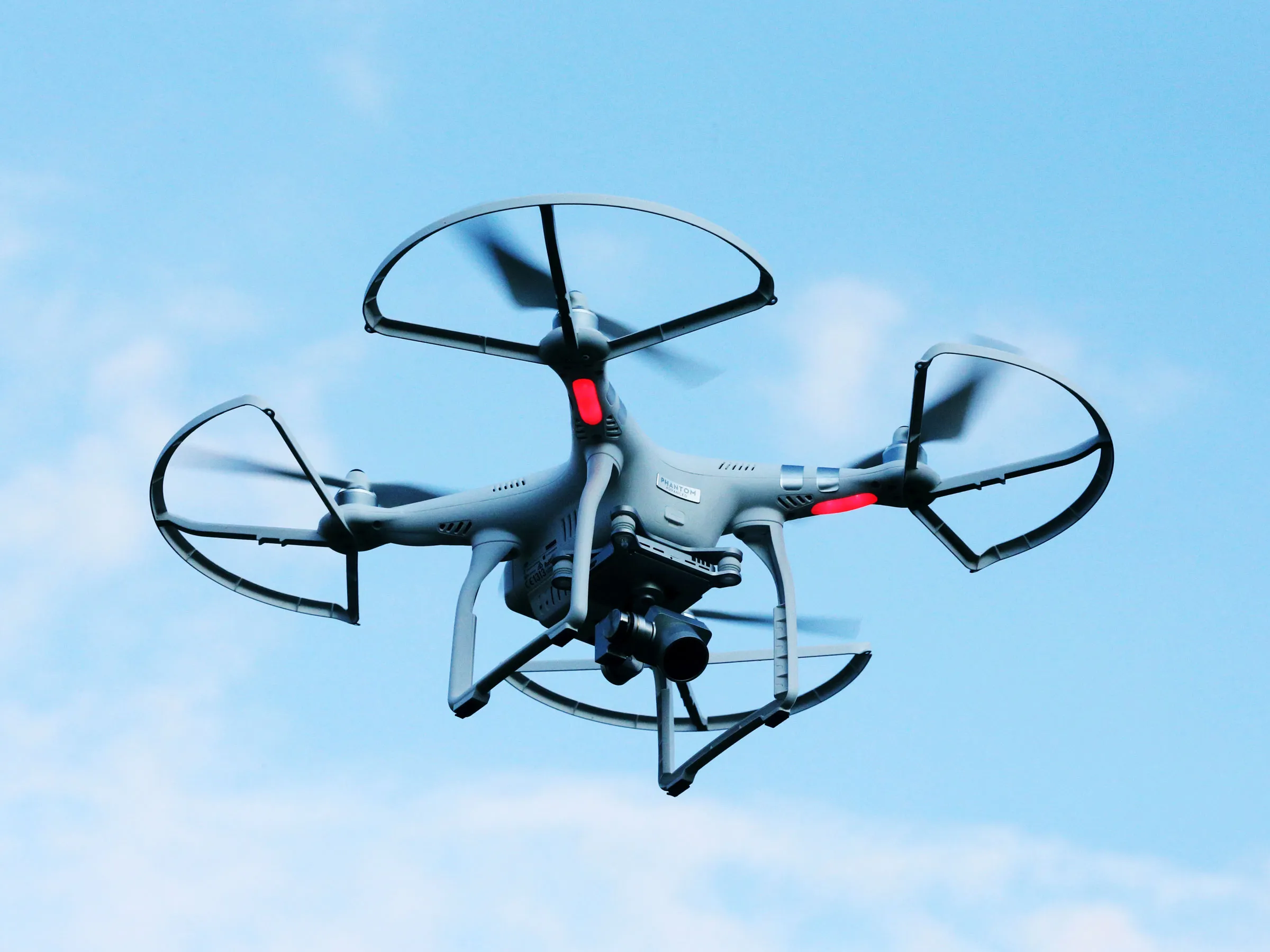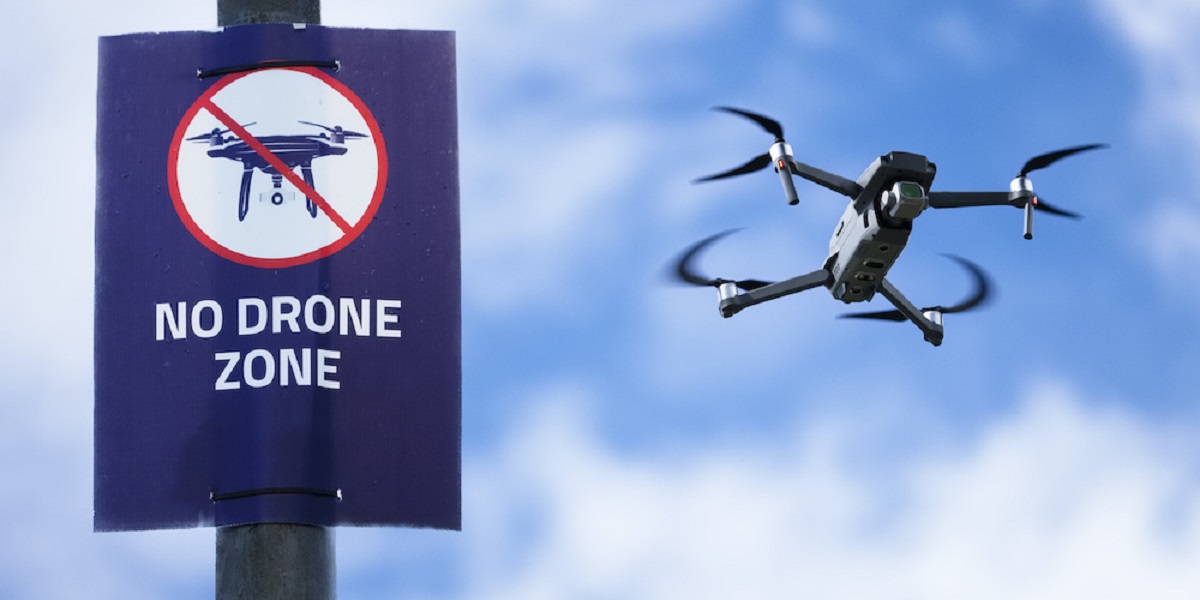Overview
Drones, also known as unmanned aerial vehicles (UAVs), have gained immense popularity in recent years. These versatile gadgets are used for various purposes, from recreational flying to professional aerial photography and videography. However, when it comes to flying drones, there are certain regulations that need to be followed, including the requirement of a drone license in some cases.
A drone license, also known as a remote pilot certificate, is a document issued by the Federal Aviation Administration (FAA) in the United States. It signifies that the drone operator has passed a knowledge test and demonstrated their understanding of aviation rules, airspace regulations, and safety procedures. This license is mandatory for those who want to fly drones commercially or for any other non-recreational purposes.
Drones are classified into different categories based on their size, weight, and usage. The FAA categorizes drones based on their purpose as recreational or commercial, and based on their weight as small, medium, or large drones. The classification of a drone determines the regulations that apply to its operation.
For recreational drone flights, a drone license is generally not required. The regulations for recreational drone pilots are less stringent compared to commercial operations. However, there are still guidelines and restrictions that must be followed to ensure safe and responsible flying.
One of the key factors in determining whether a drone license is required is the weight of the drone. Most countries have weight restrictions for drones that can be flown without a license. These restrictions are in place to mitigate the risks associated with larger and heavier drones that can potentially cause more damage or accidents.
What is a drone license?
A drone license, also known as a remote pilot certificate, is a legal document that grants individuals the authority to operate drones for commercial or non-recreational purposes. In many countries, including the United States, this license is required by law for anyone who wants to fly a drone for business or other non-recreational purposes.
To obtain a drone license, aspiring operators must pass a knowledge test that covers various topics related to drone operation, aviation rules, airspace regulations, and safety procedures. The specific requirements and regulations may vary depending on the country or region. In the United States, for example, the Federal Aviation Administration (FAA) is responsible for issuing drone licenses and regulating drone operations.
Obtaining a drone license involves a certification process that typically includes the following steps:
- Study and training: Prospective drone pilots must study the relevant regulations and guidelines provided by the FAA or the authority responsible for drone licensing in their country. They may also choose to enroll in a drone training program to gain practical knowledge and hands-on experience.
- Knowledge test: Once sufficiently prepared, the drone pilot must pass a written knowledge test that assesses their understanding of drone operation, safety practices, airspace rules, weather conditions, and emergency procedures. The test is designed to ensure that drone pilots have the necessary knowledge to operate drones safely and responsibly.
- Application: After successfully passing the knowledge test, the pilot must submit an application to the authorized licensing agency, along with any required documentation and fees. The application process may vary depending on the country or region.
- Background check: In some cases, drone license applicants may be subject to a background check to ensure that they have a clean record and do not pose a security threat.
- Issuance of license: Once the application and all necessary requirements are met, the licensing authority will review the application and, if approved, issue the drone license to the pilot.
It is important to note that the requirements and regulations surrounding drone licenses may periodically change, so it is crucial for drone pilots to stay informed and up to date with the applicable rules and regulations in their region. Failure to comply with these regulations can result in legal consequences and may compromise the safety of drone operators and the public.
How are drones classified?
Drones, or unmanned aerial vehicles (UAVs), are classified based on several factors including their purpose, size, and weight. The classification of drones helps to determine the regulations and restrictions that apply to their operation.
One common classification of drones is based on their purpose:
- Recreational drones: These drones are primarily used for personal enjoyment and hobby flying. They are typically smaller in size and are flown for recreational purposes.
- Commercial drones: Commercial drones are used for business purposes such as aerial photography, videography, agriculture, surveying, and package delivery. These drones may have additional features and capabilities to support professional use.
In addition to purpose, drones are also categorized based on their size and weight. The Federal Aviation Administration (FAA) in the United States, for instance, classifies drones into different weight categories:
- Small drones: Small drones typically weigh less than 0.55 pounds or 250 grams. These drones are generally considered lightweight and pose minimal risks to people or property.
- Medium drones: Medium drones weigh between 0.55 pounds or 250 grams and 55 pounds or 25 kilograms. These drones are larger and may have more advanced capabilities, requiring additional attention to safety and flight regulations.
- Large drones: Large drones weigh over 55 pounds or 25 kilograms. These drones are the heaviest and often used for commercial or industrial purposes. Due to their size and potential for greater impact, strict regulations and licensing requirements apply to their operation.
It is important for drone operators to be aware of the classification of their drone as it determines the rules and regulations they must follow. Different classifications may have varying restrictions on where and how the drone can be flown, as well as licensing requirements that the operator must fulfill.
It is worth noting that classification criteria may differ between countries or regions, so it is essential for drone operators to familiarize themselves with the specific rules and regulations in their area. Adhering to these classifications and guidelines ensures safe and responsible drone operation and helps prevent accidents or potential harm to people, property, or airspace.
Flying drones without a license
For recreational purposes, flying drones without a license is commonly allowed in many countries, as long as certain guidelines and regulations are followed. These guidelines are in place to ensure the safety of both the drone operator and the general public.
One of the key factors to consider when flying a drone without a license is the location. Most countries have designated areas where recreational drone flights are permitted. These areas are often away from airports, densely populated areas, and other sensitive locations.
Additionally, there are specific rules and regulations that recreational drone operators must follow to ensure safe and responsible flying:
- Registering the drone: In some countries, recreational drones above a certain weight threshold must be registered with the appropriate regulatory authority. This helps to identify the owner/operator in case of any incidents or violations.
- Abiding by height and distance restrictions: It is important to adhere to altitude and distance limitations when flying a recreational drone. The maximum allowable altitude and distance may vary depending on the country or local regulations, but generally, drones should be flown within line of sight and below a certain altitude to avoid interfering with manned aircraft or violating privacy laws.
- Avoiding no-fly zones: Certain areas are designated as no-fly zones due to their proximity to airports, government buildings, national parks, or other sensitive locations. It is crucial to respect these restrictions and avoid flying drones in prohibited areas.
- Maintaining visual contact: Recreational drone operators should always maintain visual contact with their drone while flying. This allows for immediate control and quick response to any potential hazards or technical issues.
- Respecting privacy: It is essential to respect the privacy of individuals and property when flying a drone. A drone should not be used to invade someone’s privacy or capture footage in prohibited areas such as private properties.
- Flying responsibly: Recreational drone pilots should always fly in a safe and responsible manner. This includes avoiding flying over crowds, respecting wildlife and nature, and being mindful of weather conditions that may affect the drone’s flight stability.
It is important to note that while a license may not be required for recreational drone flights, there may still be penalties and legal consequences for violating drone regulations. It is the responsibility of the drone operator to familiarize themselves with the specific rules in their region and ensure compliance to ensure the safety of themselves and others.
Regulations for recreational drone flights
Recreational drone flights are subject to certain regulations and guidelines to ensure the safe and responsible operation of drones. While these regulations may vary depending on the country or region, there are common guidelines that recreational drone operators should be aware of:
- Flight restrictions: Recreational drone flights are often subject to flight restrictions to ensure the safety and privacy of individuals and property. These restrictions may include limitations on altitude, distance from airports, and flying in certain sensitive or crowded areas. It is important to familiarize yourself with the specific flight restrictions in your area before operating a recreational drone.
- Registration requirements: In some countries, recreational drones above a certain weight threshold are required to be registered with the appropriate regulatory agency. This helps identify the drone and its operator in case of any incidents or violations. Checking whether registration is required in your country is essential to ensure compliance with regulations.
- Visual line of sight: It is generally required to maintain visual line of sight with the recreational drone during flight. This means that the drone should be visible at all times to the operator without the aid of binoculars, telescopes, or other devices. Maintaining visual contact enhances the operator’s ability to control the drone and respond to any potential hazards or issues.
- Respecting privacy: To ensure the privacy of individuals, recreational drone operators must avoid flying over private property without prior permission. This includes respecting the privacy of people, their homes, and other private areas. Respecting privacy is not only a legal requirement but also an ethical practice that helps maintain a positive reputation for drone operators.
- Interference with manned aircraft: It is important to ensure that recreational drone flights do not interfere with manned aircraft operations. Drones should not be flown near airports, heliports, or other areas where manned aircraft are present. Understanding the airspace regulations and any designated no-fly zones in your area is crucial to avoid accidents and potential legal ramifications.
- Environmental considerations: When flying drones in natural or protected areas, recreational drone operators should be mindful of the impact they may have on wildlife and the environment. Respecting wildlife habitats, avoiding unnecessary disturbance, and following any specific regulations for environmentally sensitive areas is essential.
- Weather conditions: Flying a recreational drone in adverse weather conditions, such as strong winds, rain, or snow, can pose risks to the safe operation and stability of the drone. It is important to check and consider the weather conditions before flying and to avoid flying in inclement weather.
Understanding and following these regulations for recreational drone flights is important to ensure the safety of people, property, and the drone itself. It is recommended to review the specific regulations and guidelines provided by the local aviation authority in your country or region to stay informed and compliant with the rules governing recreational drone operations.
Drone weight restrictions
Drone weight restrictions play a crucial role in determining the regulations and requirements for their operation. Most countries have specific weight limits for drones that can be flown without a license. These restrictions are in place to mitigate potential risks associated with larger and heavier drones.
The weight limit for drones varies from country to country. For example, in the United States, the Federal Aviation Administration (FAA) classifies drones into different weight categories, each with its own set of regulations:
- Under 0.55 pounds (250 grams): Drones in this weight class are considered small and lightweight. They are generally exempt from specific regulations, allowing for more flexibility in terms of where and how they can be flown. However, they are still subject to general guidelines and restrictions to ensure safe and responsible operation.
- Between 0.55 pounds (250 grams) and 55 pounds (25 kilograms): Drones falling within this weight category are considered medium-sized. They are subject to a range of regulations covering areas such as registration, flight restrictions, and airspace rules. Pilots may need to follow specific guidelines and obtain appropriate authorization for certain operations.
- Above 55 pounds (25 kilograms): Drones weighing above this threshold are classified as large drones. Operating such drones typically requires more stringent regulations and licensing requirements. Pilots may need to obtain specialized certifications, follow strict flight restrictions, and adhere to additional safety measures to mitigate the risks associated with larger and heavier drones.
It is important for drone operators to be aware of the weight classification of their drone to understand the regulations that apply to their specific situation. Failure to comply with these weight restrictions can result in legal consequences, including fines and potential damage to property or injury to individuals.
When purchasing a drone, it is essential to consider the weight of the device and ensure that it falls within the allowable limit for recreational flights without a license. Manufacturers typically provide information about the weight of their drones to help consumers make informed decisions.
Furthermore, it is crucial to regularly check for updates to the regulations and weight restrictions in your country or region, as these guidelines may change over time. Staying informed about any modifications or new regulations ensures compliance and responsible drone operation.
By adhering to weight restrictions and regulations, drone operators can help ensure the safety and responsible use of drones, protecting both individuals and the public at large.
What is the largest drone you can fly without a license?
When it comes to flying drones without a license, the maximum size or weight limit can vary depending on the country or region. Each regulatory authority sets its own rules and guidelines for recreational drone operations. To determine the largest drone that can be flown without a license, it is important to consider the weight restrictions imposed by the local aviation authority.
In the United States, for example, the Federal Aviation Administration (FAA) does not require a license for recreational drone flights, but they do have specific weight limitations. As of the current regulations, recreational drone pilots do not need a license as long as their drone weighs less than 55 pounds or 25 kilograms.
This weight limit allows for the operation of a wide range of drones without the need for a license. However, it is important to note that even with a drone within this weight limit, operators still need to adhere to other regulations and guidelines, such as maintaining line of sight, respecting flight restrictions, and following safety best practices.
Other countries may have different weight restrictions for drones that can be flown without a license. It is essential for drone operators to consult the specific regulations provided by the local aviation authority in their region to determine the exact weight limit.
It is worth mentioning that even though a license may not be required for recreational flights within a certain weight limit, obtaining a drone license may still be beneficial. Commercial operations, flying drones above the weight restriction, or conducting certain specialized activities may require a license regardless of the size of the drone.
Before operating a drone, it is crucial to research and understand the regulations and weight restrictions specific to your country or region. This will help ensure compliance and promote the safe and responsible operation of drones.
Always remember that the laws and regulations surrounding drone operations are subject to change. Staying informed about any updates or amendments to the regulations is essential to ensure legal and responsible drone use.
Considering drone capabilities and features
When choosing a drone, it is important to consider its capabilities and features to ensure that it meets your specific needs and requirements. Understanding the different aspects of a drone can help you make an informed decision and maximize your flying experience.
Flight Performance: One of the key factors to consider is the drone’s flight performance. This includes factors such as its stability, maneuverability, and agility. A drone with good flight performance will be easier to control and handle, allowing for smooth and enjoyable flights.
Battery Life: The battery life of a drone determines how long it can fly before needing to be recharged. Longer battery life allows for extended flight time and more opportunities to capture aerial footage or explore different areas. It is important to consider the battery life of a drone and whether it meets your intended usage.
Camera Quality: Many drones are equipped with built-in cameras, ranging from basic models to high-quality professional cameras. When choosing a drone for aerial photography or videography, consider the camera resolution, capability for manual control, stabilization features, and any additional camera accessories that may enhance the overall image quality.
Obstacle Avoidance: Some drones are equipped with obstacle avoidance sensors, which help detect and avoid obstacles such as trees, buildings, or other objects during flight. This feature can enhance the safety and reduce the risk of collisions, especially when flying in complex environments or tight spaces.
GPS and Navigation: Drones equipped with GPS and navigation features offer enhanced flight stability, accurate positioning, and advanced flight modes. These features allow for precise navigation, autonomous flight capabilities, and the ability to track and follow subjects. This can be particularly useful for capturing dynamic and cinematic aerial shots.
Remote Control Range: The remote control range determines how far the drone can be operated from the pilot. It is important to consider the intended usage and ensure that the remote control range is sufficient for your needs. Keep in mind that some countries have regulations that limit the maximum distance a drone can be flown from the operator.
Additional Features: Drones may offer various additional features, such as gesture control, follow-me mode, return-to-home function, or smart flight modes. These features can enhance the overall flying experience and provide added convenience and creative possibilities.
By considering the drone’s capabilities and features, you can select a drone that aligns with your specific requirements and intended usage. It is important to research and compare different models, read reviews, and consult with experienced drone operators to make an informed decision.
Remember, regardless of the capabilities and features, always fly your drone responsibly and follow the regulations and guidelines set by the local aviation authority to ensure a safe and enjoyable flying experience.
Understanding local laws and regulations
When it comes to flying drones, it is crucial to have a solid understanding of the local laws and regulations that govern their operation. Each country has its own set of rules and guidelines, and it is the responsibility of drone operators to comply with these regulations to ensure safe and lawful drone flights.
The local laws and regulations for drones may cover various aspects, including but not limited to:
- Registration: Some countries require drones to be registered with the appropriate regulatory authority. This registration process helps identify the owner/operator of the drone and may involve providing certain information, such as the drone’s make, model, and unique identification number.
- Flight restrictions: Local regulations may designate certain areas as no-fly zones or impose altitude and distance limitations for drone operation. These restrictions are in place to ensure the safety and privacy of individuals, protect sensitive areas, and prevent interference with manned aircraft or other critical infrastructure.
- Licensing and certification: Depending on the purpose and use of the drone, operators may be required to obtain a license or certification. Commercial drone pilots, for example, often need to pass a knowledge test and obtain a remote pilot certificate or equivalent license. This ensures that drone operators have the necessary knowledge and skills to operate drones safely and responsibly.
- Privacy and data protection: Local regulations may include provisions to protect the privacy of individuals and ensure the proper handling of data collected by drones. Drone operators may need to obtain consent when capturing images or videos in certain locations or adhere to specific privacy guidelines.
- Insurance requirements: Some countries may require drone operators to have liability insurance coverage in case of accidents or damages caused by the drone. This helps protect both the operator and potential third parties affected by drone operations.
It is crucial for drone operators to thoroughly research the specific laws and regulations in their country or region before flying a drone. The local aviation authority or relevant government agency typically provides comprehensive guidelines and resources to educate drone operators about their legal responsibilities.
Staying informed about the laws and regulations surrounding drone operation is essential, as they can change or be updated periodically. It is the responsibility of the drone operator to keep abreast of any changes and ensure ongoing compliance with the latest regulations.
Additionally, it is important to note that some local laws may have additional requirements or restrictions beyond what is covered by national regulations. This includes rules set by municipalities, parks, or other local governing bodies. Understanding and respecting these additional regulations is crucial to avoiding legal issues and promoting safe and responsible drone use within the local community.
By understanding and adhering to the local laws and regulations, drone operators can enjoy their flights while ensuring the safety of people, property, and the airspace. Ignorance of the law is not an excuse, so take the time to educate yourself and fly your drone responsibly within the legal framework.
Conclusion
As drone technology continues to advance and their popularity increases, it is important for drone operators to be aware of the regulations and requirements governing their use. Understanding local laws and regulations, as well as considering drone capabilities and features, is crucial for safe and responsible drone operation.
For recreational drone flights, a license is generally not required in most countries. However, there are still guidelines and restrictions that must be followed to ensure the safety of both the drone operator and the public. These include abiding by flight restrictions, maintaining visual line of sight, respecting privacy, and flying responsibly.
Drone weight restrictions also play a significant role in determining the regulations that apply to their operation. Different weight classifications may have varying restrictions and licensing requirements, so it is essential to understand the weight limit for recreational drone flights without a license in your country or region.
Considering drone capabilities and features is another important aspect when choosing a drone. Flight performance, battery life, camera quality, obstacle avoidance, GPS and navigation, remote control range, and additional features all contribute to the overall flying experience and the drone’s usability for different purposes.
Finally, understanding the local laws and regulations pertaining to drone operations is crucial. Each country has its own specific set of rules and guidelines that drone operators must comply with, including registration requirements, flight restrictions, licensing and certification, privacy and data protection, and insurance requirements.
By following these guidelines and regulations, drone operators can enjoy the benefits of drone flights while ensuring the safety of themselves, others, and the airspace. It is essential to stay informed about any updates or changes to the regulations and invest time in researching and understanding the laws specific to your region. Responsible and respectful drone operation fosters a positive public perception of drones and helps to maintain the integrity and future development of the industry.







